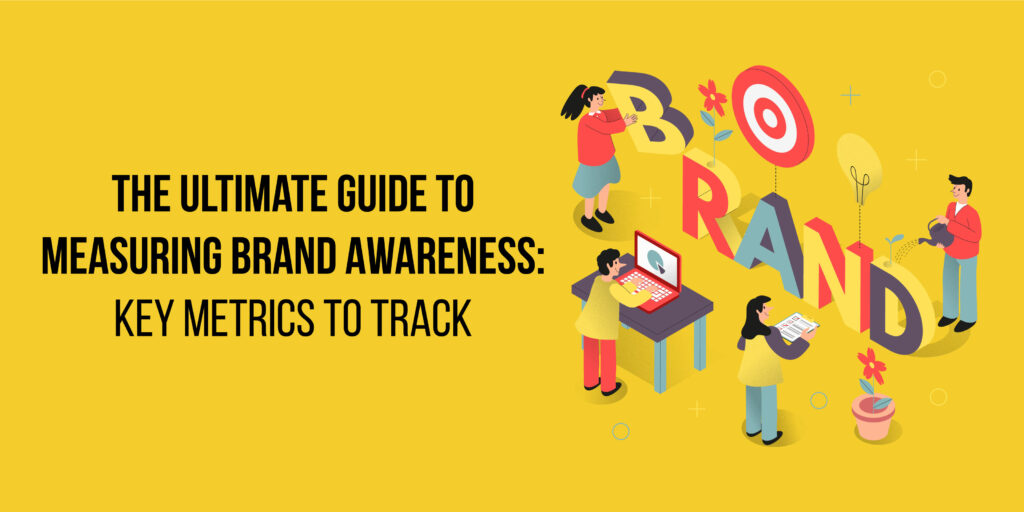
The Ultimate Guide to Measuring Brand Awareness: Key Metrics to Track
Introduction
In the dynamic business landscape, establishing and nurturing brand awareness is paramount. Brands invest significant resources in crafting compelling narratives and resonating with their target audience. But how can you truly gauge the effectiveness of your efforts? Let’s dive into the ultimate guide on measuring brand awareness, exploring key metrics and KPIs that provide actionable insights.
Understanding Brand Awareness Measurement
Before delving into the intricacies of measuring brand awareness, it’s essential to grasp the concept itself. Brand awareness encapsulates how consumers recognize and recall a particular brand. It’s the foundation upon which customer trust and loyalty are built.
The Significance of Measuring Brand Awareness
Why measure brand awareness? The answer lies in the ability to assess the impact of your marketing strategies. Whether launching a new product or reinforcing an existing brand, understanding how your audience perceives and recognizes your offerings is crucial for informed decision-making.
Key Metrics for Measuring Brand Awareness
1. Social Media Reach
Harness the power of social media platforms to measure brand awareness. Track mentions, shares, and impressions across various channels. This real-time data offers insights into the reach and engagement of your brand.
2. Website Traffic
A brand’s online presence is often consumers’ first point of contact. Analyze website traffic, paying attention to unique visitors and page views. A surge in traffic indicates increased brand visibility.
3. Surveys and Feedback
Direct feedback from your target audience is invaluable. Implement surveys to gauge brand recall and perception. Regularly collecting customer feedback provides a qualitative dimension to your brand awareness measurement.
4. Search Engine Visibility
Monitor your brand’s presence in search engine results. High-ranking positions for relevant keywords indicate a strong brand presence. Utilize SEO strategies to optimize your online visibility.
5. Partnerships and Collaborations
Examine the success of partnerships and collaborations. Assess whether your brand collaborations contribute to heightened awareness among your partner’s audience. This metric is especially relevant for co-branded campaigns.
Measuring Brand Performance with KPIs
1. Brand Awareness Index (BAI)
The Brand Awareness Index is a composite score that reflects the overall awareness of your brand. It considers factors such as brand recall, familiarity, and consideration. Regularly track BAI to measure the trajectory of your brand awareness efforts.
2. Social Media Engagement Rate
Dive deeper into social media metrics by analyzing engagement rates. This includes likes, comments, and shares. A high engagement rate signifies an active and involved audience, indicating a successful brand awareness strategy.
3. Conversion Rate from Awareness to Consideration
Move beyond mere awareness to measure the effectiveness of your brand in converting leads into active consideration. A rising conversion rate indicates that your brand resonates with the audience on a deeper level.
Conclusion
Measuring brand awareness is not a one-size-fits-all endeavor. It involves a holistic approach, combining quantitative and qualitative metrics to paint a comprehensive picture of your brand’s performance. By consistently tracking metrics like social media reach, website traffic, and brand awareness indices, you empower your brand with the insights needed to adapt and thrive in the ever-evolving market. Remember, the journey to brand success begins with understanding how to measure brand awareness effectively. Read more marketing blogs for business on Gemius.
Frequently Asked Questions
1. What is a brand awareness KPI?
A Brand Awareness KPI is a quantifiable metric used to gauge the visibility and recognition of a brand within its target market. Common KPIs include aided and unaided brand recall, social media mentions, website traffic, and brand sentiment analysis. These metrics help businesses understand how well their brand is known and perceived by their audience.
2. How brand awareness can be assessed
Brand awareness can be assessed through various methods:
–Surveys and Questionnaires: Directly asking the target audience about their awareness and perception of the brand.
–Social Media Analytics: Monitoring social platforms for mentions, likes, shares, and comments related to the brand.
–Website Analytics: Analyzing website traffic, unique visitors, and user behavior to determine the online visibility of the brand.
–Brand Sentiment Analysis: Evaluating public sentiment towards the brand through online discussions and reviews.
Combining these methods provides a comprehensive understanding of brand awareness, helping companies make informed decisions about their marketing strategies.
3. How do you measure brand awareness offline?
Offline brand awareness measurement involves more traditional approaches:
– Market Research: Conduct surveys, interviews, or focus groups in person to gather insights into brand recognition and perception.
– Brand Recall Studies: Assessing how well individuals remember a brand after exposure to offline advertising, events, or other promotional activities.
– Partnership and Sponsorship Evaluation: Analyzing the impact of offline partnerships, sponsorships, or events on brand visibility.
These methods help capture the offline reach of a brand, especially in scenarios where online metrics may not fully reflect the overall brand awareness picture.



